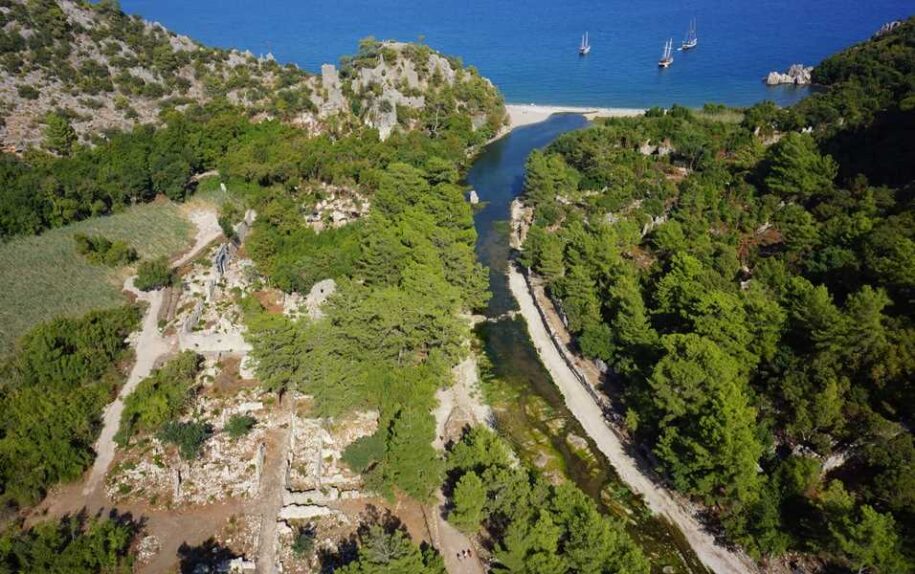Olympos Ancient City is one of the most beautiful ancient cities in the world, located on both sides of a river that extends to the beach. Rather than being a museum where you watch the historical ruins from afar, it is a living ancient city where you wander through the streets within a forest. This special situation of the ancient city makes you feel like a visitor to the past times of this thousands of years old city, or explorers from the Indiana Jones movies. Where the ancient city ends, Olympos-Çıralı beach begins in all its glory which is a great place to end your adventure of discovery!
The settlement of Olympos Ancient City includes architectural remains of three different periods starting from 300 BC:
- Hellenistic Period
- Roman period
- Byzantine Period
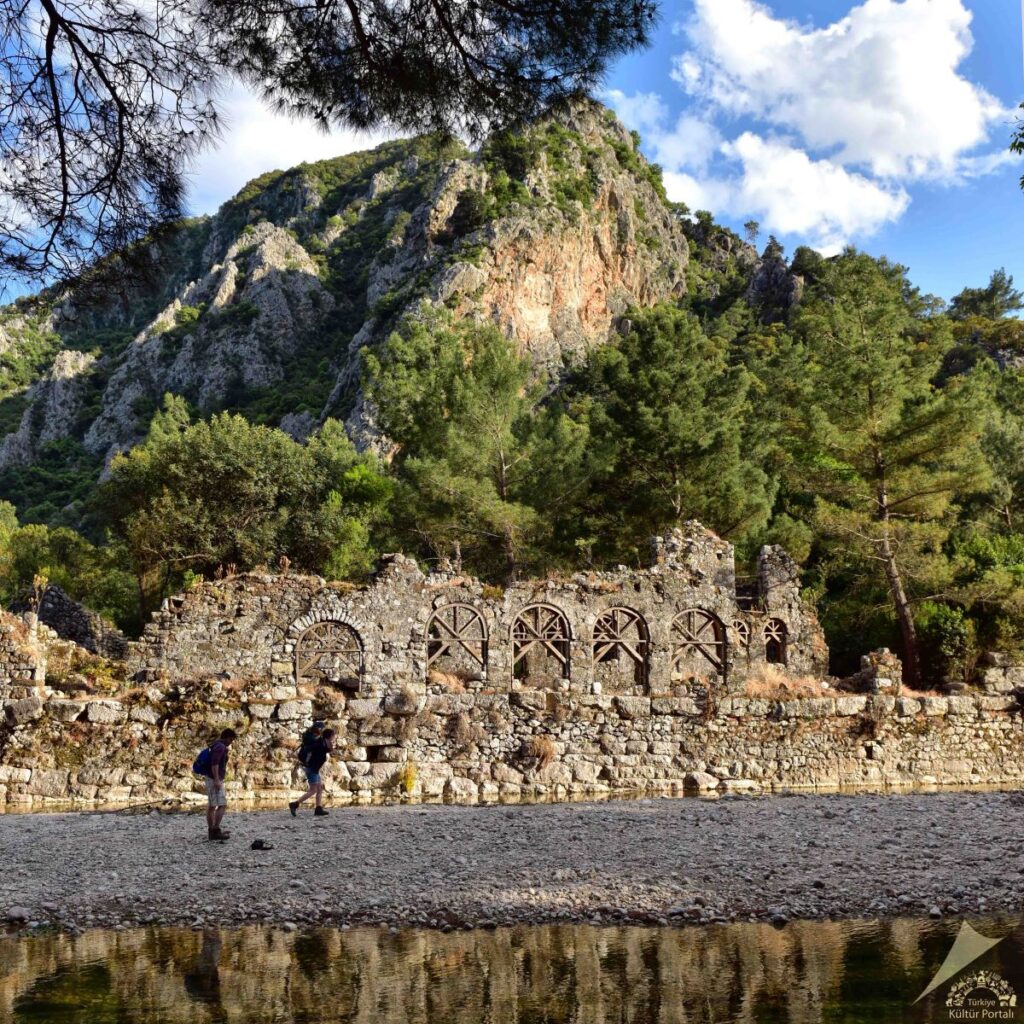
Hellenistic Period and Lycian League
The earliest times of the Olympos settlement has traces of the Hellenistic Period. It is one of the member cities of the ancient Lycian League. Known to have established the first democratic union known in history, the Lycians formed a common culture and created a federation, even though they came together from different cities. With this feature, it is said to have inspired the United States Constitution. Lycian League consists of 23 cities with voting rights proportional to their population, and Olympos is one of the cities with highest votes. It is also one of the most important port cities of Lycian League together with Phaselis.
In this period of Olympos, ceremonies are held for the Persian and Ancient Greek gods. It is not known whether it was inspired by Mithra, the Persian god of light, or because this geography was always sunny, but the word Lycia also means “land of light” in Lycian. The name of the city of Olympos comes from Mount Tahtalı (its ancient name is Olympos), which is 10 km away.
Due to piracy activities and earthquakes, there are very few intact remains of this period in Olympos, the most important are the city walls. The bridge pillar and the theater are also Hellenistic, but since they were repaired during the Roman period, its style is more similar to that period.
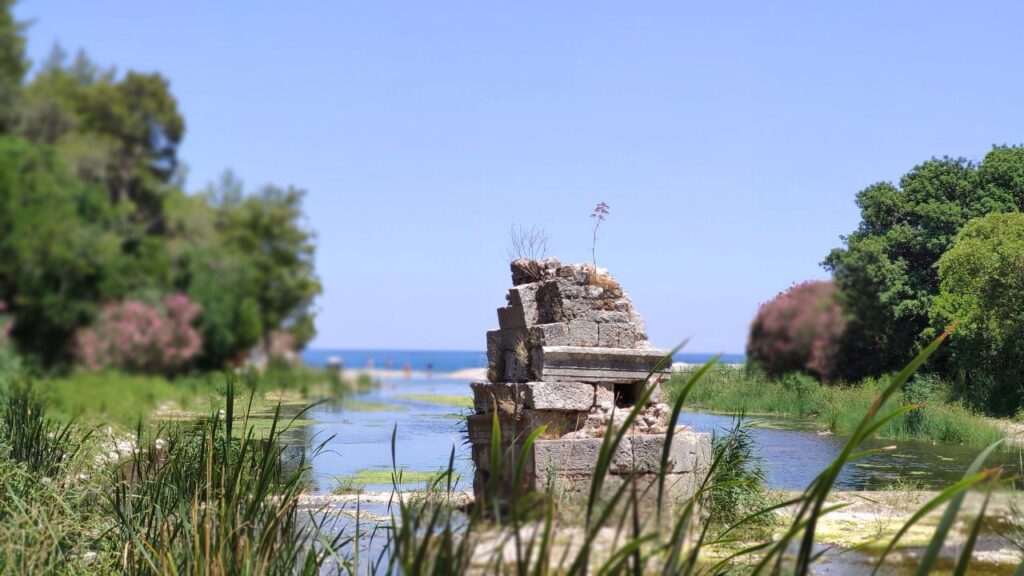
Roman and Byzantine Period
Almost all of the city ruins that can be seen in Olympos Ancient City belong to the Roman and Byzantine periods. In these periods, although Lycian League still existed, it was included in Roman Empire (as an independent province in internal affairs). Gradually, along with the ancient Greek beliefs, Christianity began to spread.
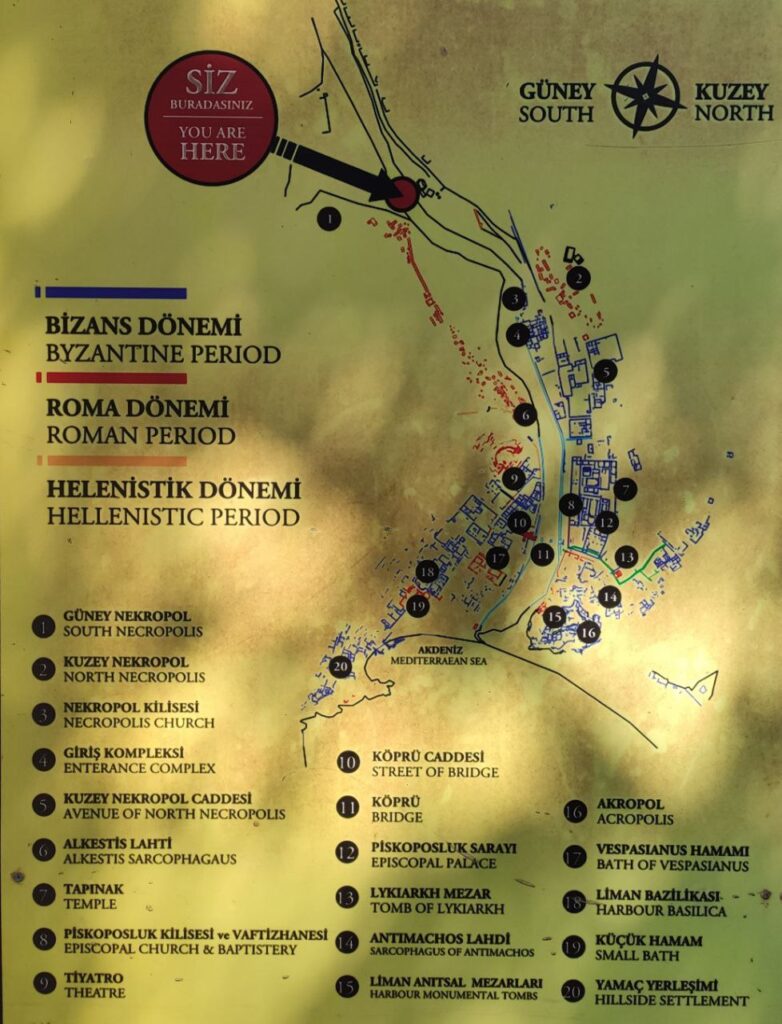
Some of the significant ruins in the ancient city:
- South of the river: Southern Necropolis, Alkestis Tomb, city walls, theater, Roman bath and Genoese Castle
- North of the river: Northern Necropolis, Roman Temple, mausoleum, Episcopal Church, mosaic structure, harbor mausoleums, Captain Eudemos’s Tomb and Acropolis
The emotional epitaph-poem on the mausoleum made for Eudemos, the captain of a ship that participated in wars in 200 BC, is also noteworthy:
The ship sailed into the last harbour and anchored to leave no more
As there was no longer any hope from the wind or daylight
After the light carried by the dawn had left Captain Eudemos
There buried the ship with a life as short as a day, like a broken wave.
If you have discovered this beautiful ancient city inside the Mediterranean forests enough, do not forget to see the magnificent view of Olympos-Çıralı beach from Genoese Castle at last.
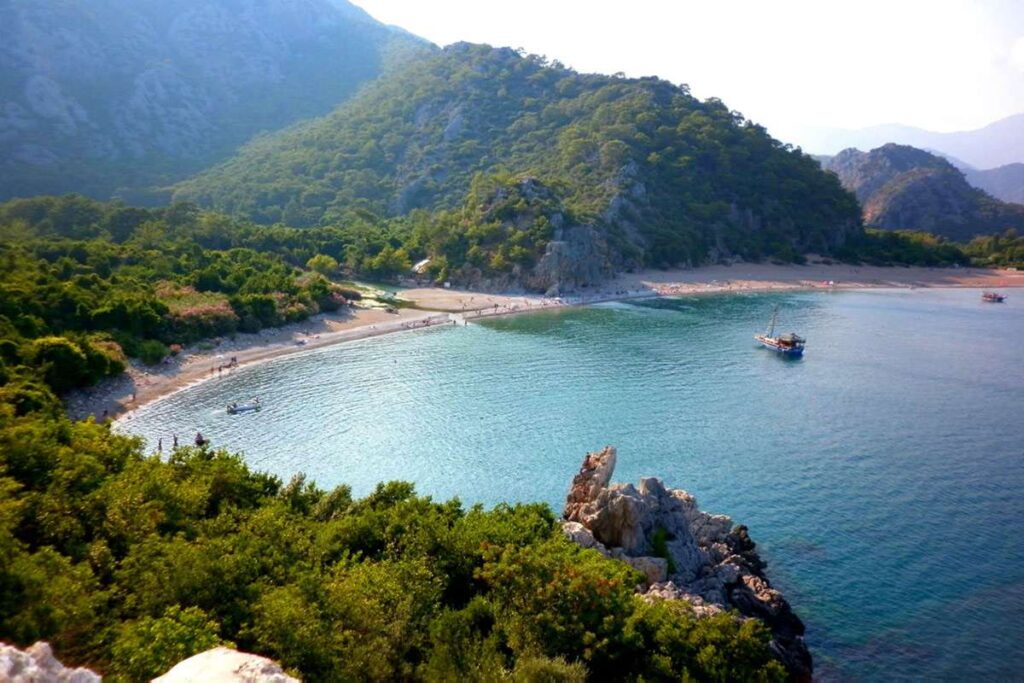
Access to ancient city
Entrance to Olympos Ancient City is only possible with MuseumPass or 1-10 pass cards. These cards can be bought from main gate of ancient city. The gate has opening/closing times. For the summer of 2022, it opens at 6:45 AM and closes at 8 PM (times may change in other seasons). Access to the beach is also provided via the same road, so these hours also affect the beach entrances and exits.

